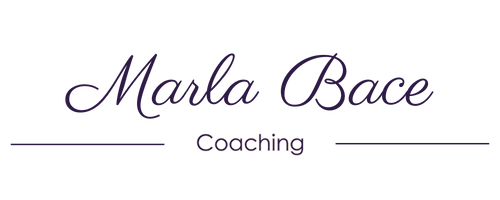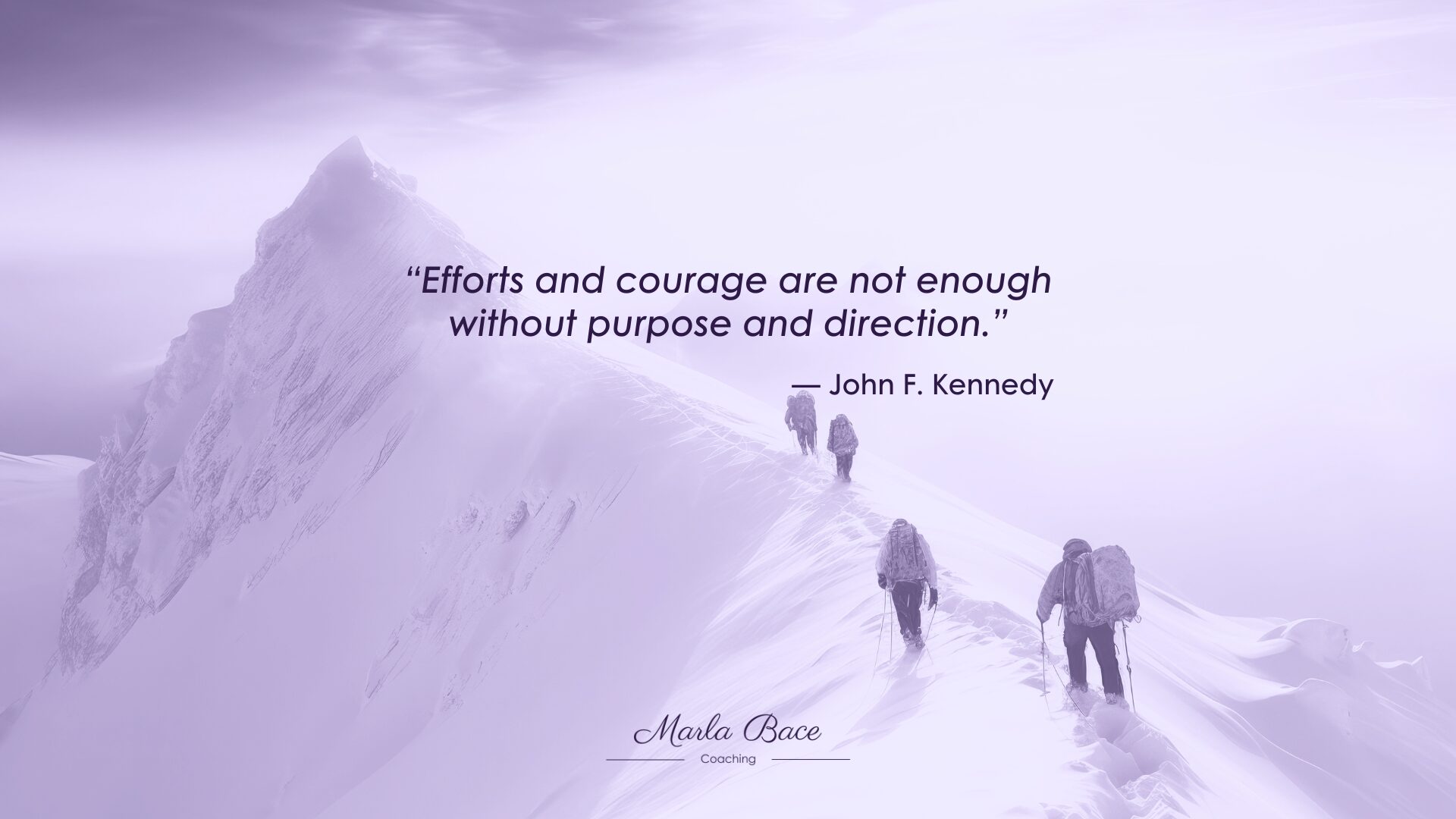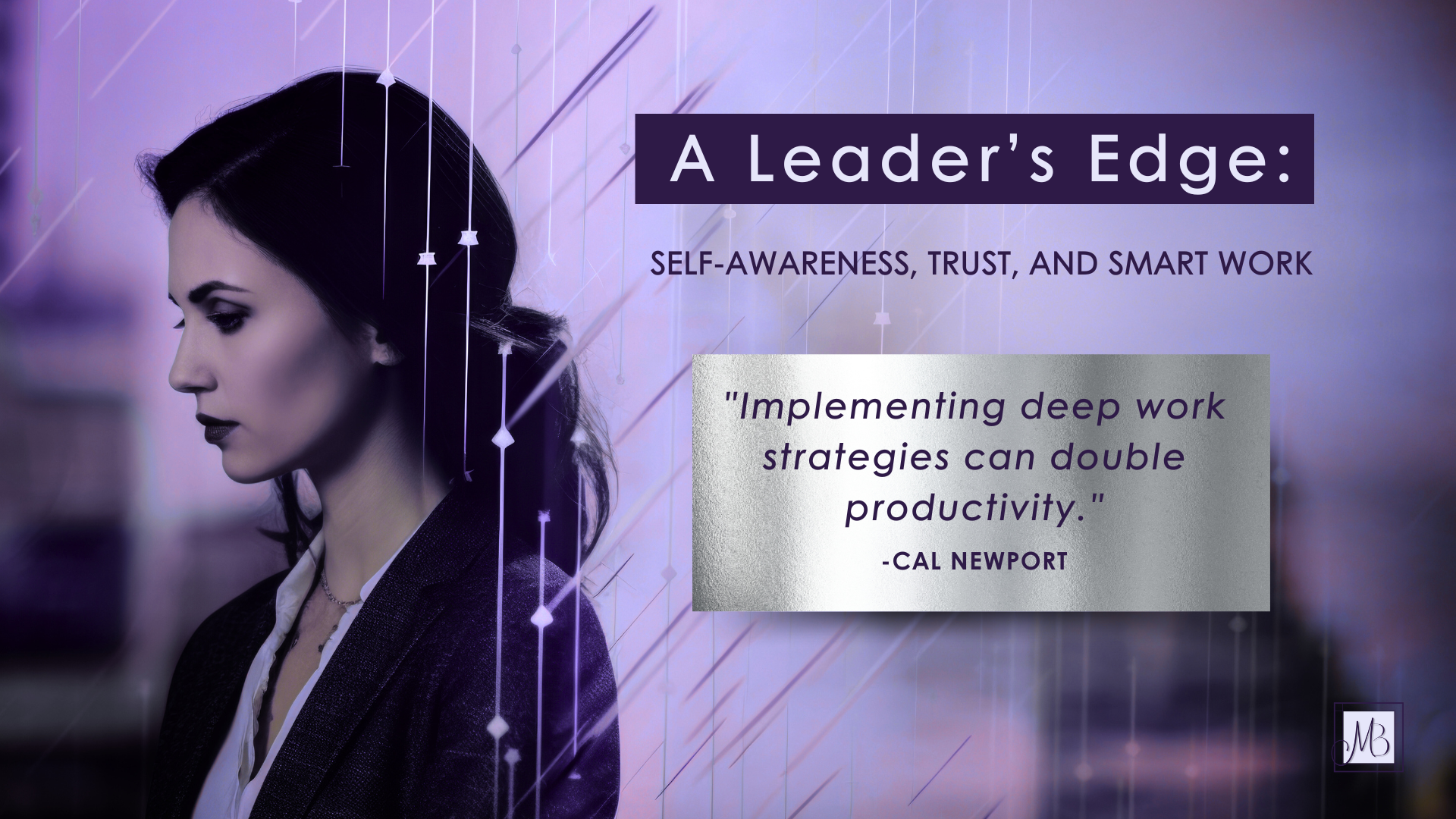How to Lead with Greater Impact
In today’s fast-paced, high-expectation business environment, leadership is often defined by efficiency, output, and bottom-line results. But at what cost? Are you leading as your authentic self, or are you pushing your team—and yourself—against unrealistic deadlines, such as expecting a project to be completed in half the time it usually takes? If so, do you genuinely understand the trade-offs you’re making? What are you ultimately giving up in the process?
I have always believed that leadership is about achieving goals and the impact we leave on those we work with. Recently, I’ve been humbled by a handful of people—vendors, not clients—who have shared with me how working together has positively impacted their lives. It made me pause and reflect: What is it that I naturally do when working with individuals who bring their expertise to the table? How do I, in turn, bring out the best in them to elevate their performance and my own growth as a leader?
I am asking you as we see more and more people becoming entrepreneurs or with the need to work across generations. How are you endearing yourself to others, building trust, boosting morale, and delivering better results without burnout? Are you changing with the times?
The Power of Leading with Heart
Many of the leadership buzzwords we see today—empathy, emotional intelligence, servant leadership—are things I have always just done intuitively. It’s about recognizing the small yet powerful moments:
- Letting people know they are appreciated.
- Seeing when someone is stressed and taking a moment to ask why.
- Strategically working through process improvements rather than reacting with frustration when deadlines are missed.
- Acknowledging when I, as the leader, may have contributed to the issue and taking ownership before expecting others to adjust.
Authentic leadership means understanding that the people you work with are not just cogs in a machine. It means recognizing their strengths, limits, and potential and creating an environment that allows them and you to thrive. This approach fosters a positive work environment and inspires and motivates your team to perform at their best, leading to greater team engagement and improved results.
The Cost of Pushing Too Hard
There is a common belief that leaders must push their teams to the brink to achieve success. But what if this belief is flawed? What if setting unrealistic expectations and ignoring the well-being of those around us diminishes long-term success in reality? It’s crucial to consider the negative impact of pushing too hard, as it can lead to burnout, disengagement, and a culture of fear.
When leaders prioritize speed over sustainability, they sacrifice:
- Team morale: Constant pressure and unattainable expectations lead to burnout and disengagement.
- Creativity and innovation: When employees are always racing against deadlines, they don’t have the mental space to think creatively or problem-solve effectively. This includes you as the leader. If you cannot step back and observe the result you are on the path to achieving, how can you be nimble when necessary?
- Trust and loyalty: A culture of fear and relentless demands erodes trust. People leave, and retention suffers. This bleeds over to business relationships. Remember, you are not two different people; how you treat your team is most likely how you treat your external network, too.
Of course, leadership is not about lowering standards or avoiding tough decisions. It’s about striking a balance—knowing when to push and when to pause. This balance reassures your team that you are considerate of their well-being and confident in your leadership decisions, fostering a sense of trust and respect.
Making the Hard Calls
Authentic leadership isn’t just about fostering a positive work environment; it also requires difficult decisions. Recently, I worked with someone who was young, ambitious, and eager to learn. Unfortunately, despite their enthusiasm, they lacked the necessary skills, and their struggles impacted the rest of the team. As much as I wanted to nurture their growth, I had to recognize the reality of the situation and take decisive action. My authenticity empowered this decision as a leader.
This is where authentic leadership truly comes into play—understanding when to support and when to let go. It’s about hiring smart and slow, firing fast when necessary, and continuously reassessing expectations and processes to ensure they remain realistic and practical.
A Leadership Shift: The Move Toward Authenticity
We are witnessing a shift in leadership that is moving away from rigid, transactional management styles toward leading with heart. The best leaders today are those who:
- Prioritize long-term success over short-term gains.
- Recognize humanity in their teams and cultivate a culture of mutual respect.
- Balance high expectations with the necessary support to achieve them.
Leaders must evolve as business landscapes shift and workplace demographics become more diverse. Today’s Leadership requires connecting with multiple generations, inspiring action without force, and creating environments where people want to perform at their best—not because they fear consequences, but because they are genuinely engaged.
The Challenge: How Will You Evolve?
Authentic leadership is not about perfection. It’s about leadership presence, self-awareness, and a commitment to continuous growth—for yourself and those you lead.
Consider your impact on the people who work alongside you. If you take a moment to reflect, what kind of leader are you? Are you creating an environment where people feel valued, challenged, and inspired? Or are you unintentionally fostering stress and burnout in the pursuit of results?
Take a pulse on yourself. Think about the last few months—have you had genuine conversations with your team about what’s working and what’s not? Have you acknowledged when you’ve pushed too hard or when you’ve asked for more than was scoped initially? Have you taken the time to notice when someone is struggling and offered a solution that helps them succeed rather than simply demanding they “figure it out”?
Leadership is about evolution. If you are unsure whether you’re leading authentically, start by paying closer attention. Listen to how people respond to you. Watch for signs of engagement or disengagement. Ask direct but open-ended questions: “What’s getting in your way?” or “How can we make this process work better for everyone?” Then, be willing to adjust. The most effective leaders don’t have all the answers but are eager to grow alongside their teams.
So, I challenge you—how will you evolve? Will you continue leading the way you always have, or will you start leading with greater awareness, balance, and heart? The choice is yours.









